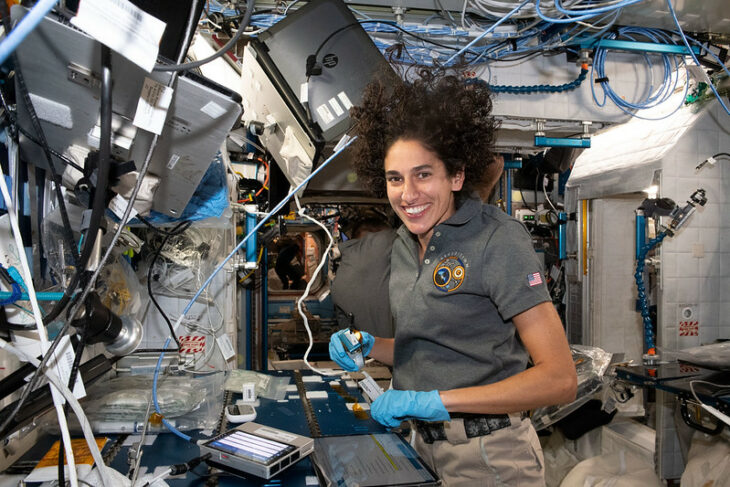Astronauts often experience symptoms affecting their sensory systems after space flight, like unsteadiness when walking or standing, blurred vision, and fatigue. These symptoms are called bilateral vestibulopathy, or BVP. Patients on Earth can also experience BVP, but they have different symptoms than astronauts with BVP do. Scientists think these differences arise in parts of the sensory system responsible for tracking head movement and the body’s orientation in space, which include a set of nerves in our ear called the vestibular nerve.
Astronauts in space experience lower gravity than on Earth. Under these conditions, organs in the inner ear that our brains use to sense head movement and spatial orientation fail to work correctly. This causes astronauts to have difficulties determining their body’s true position, motion, and altitude. After returning to Earth’s gravity, astronauts usually have to undergo rehabilitation to correct the resulting balance and coordination issues.
Researchers from France recently compared BVP symptoms experienced by astronauts during readaptation to Earth’s gravity to symptoms of patients with BVP on Earth. The team wanted to test strategies that help people on Earth adapt to BVP during rehabilitation, in the hopes of establishing or improving rehabilitation strategies for astronauts returning from space.
The researchers recruited 28 astronauts, including 7 males and 11 females with a mean age of 48 years, who all lived aboard the International Space Station for 6 to 11 months. They also recruited 30 patients, including 13 males and 17 females with a mean age of 61 years, who all had BVP but had never left Earth. They asked each participant to perform 5 tests designed to examine their mobility and reaction times.
To examine the participants’ balance, they measured the time it took them to stand up from a seated position and establish a stable posture, called the “sit-to-stand test”. Then, they measured how long it took them to walk around a cone, called the “walk-and-turn test”. Next, they asked the participants to perform a heel-to-toe maneuver, like walking on a tightrope with their arms folded across their chests, called the “tandem walk test.” The researchers recorded each participant as they repeated this procedure twice and examined each recording to determine the number of correct steps they took during each trial.
The researchers also asked the patients to track the passing of 1 minute while wearing a virtual-reality (VR) device and earphones to mask external noises. The VR device instructed the patients to press the “go” button on a laptop mouse and wait for 1 minute before pressing the “stop” button. They used this test, known as the “duration judgment test,” to see how well each participant sensed the passage of time. Finally, they asked participants with their VR devices on to react as fast as possible to a blue square that appeared for 50 milliseconds at random intervals, in the “reaction time test.” The researchers performed these tests on the astronauts about 3 months before launch, once each month during spaceflight, 2 hours after they returned to Earth, and 24 hours after they returned to Earth.
The researchers found that Earth-bound BVP patients walked around the cone more slowly than the astronauts did, both during and after spaceflight. They also found the BVP patients had fewer correct steps in the tightrope walk than the astronauts did 24 hours after their return to Earth. However, the time it took Earth-bound BVP patients to settle in during the sit-to-stand test fell between the astronauts’ times on the day of landing and 24 hours later. Both the Earth-bound BVP patients and the astronauts failed to correctly sense the passage of time and reacted slowly to the blue square.
The researchers concluded that problems with balance, sensing the passage of time, and reaction times experienced by astronauts after spaceflight were similar to patients on Earth with BVP. Thus, they proposed that these problems are caused by a malfunctioning central nervous system that affects their senses, similar to Earth-bound patients. The team recommended the astronauts use training exercises designed to improve sight, hearing, and sense of touch in orbit and after spaceflight to reduce these post-flight health issues.
The researchers cautioned that 2 limitations of their study were an age difference between the astronaut and Earth-bound groups and that the BVP subjects on Earth received rehabilitation therapy while the astronauts did not. They also pointed out that they were unable to test postflight astronauts to properly diagnose conditions of the central nervous system, so further research is required to confirm if it’s causing these symptoms.


